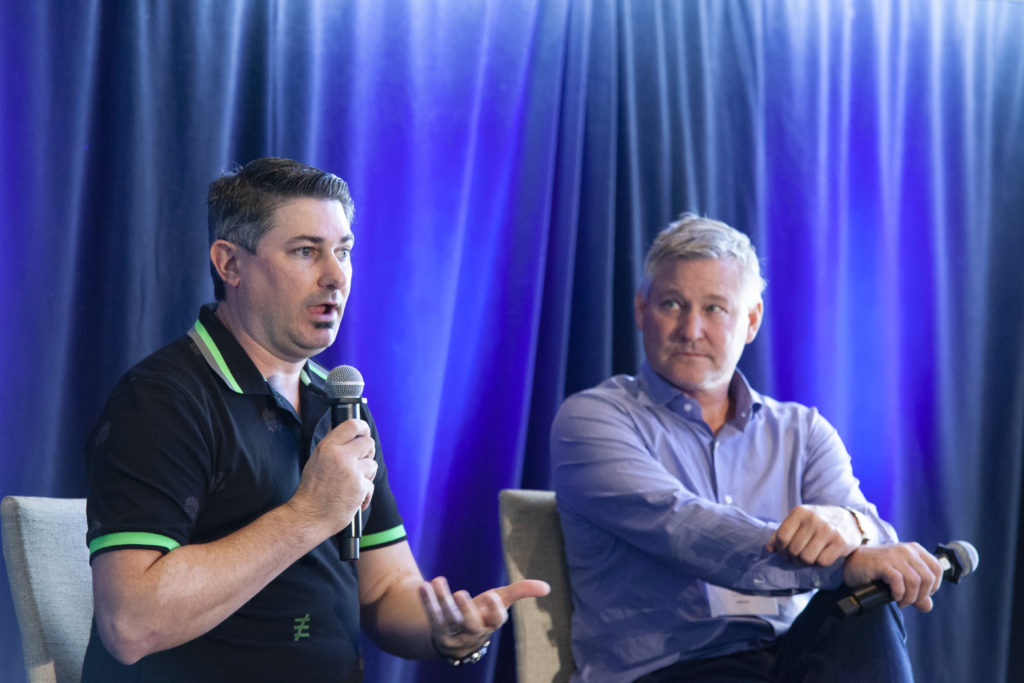M+E Connections

EES Panel: Learning to Deal With Artistic Ch-Ch-Ch-Changes
Story Highlights
Despite all the preparation in the world, once creatives get on the set (or near it), adjustments within the virtual environment imagery are nearly always going to be requested.
Making artistic changes during active production is a crucial, all hands on deck effort.
Artists across multiple vendors, operating from disparate locations, and LED stage technicians delivering high resolution digital assets and environments to a volumetric stage need no-nonsense interconnectivity to ensure a stable environment for the massive amount of data being transmitted and stored today by media and entertainment companies.
That exchange and others, including camera to cloud, are supported by a facility’s in-house data center infrastructure, which is the fundamental layer of any data-centric workflow.
Noting that the main purpose of the Media and Entertainment Data Center Alliance (MEDCA) is to advocate for industry standards, Eric Rigney, MEDCA VP, said Sept. 21 at the Entertainment Evolution Symposium (EES) that his organization operates within the M&E sector “so that all of this stuff that everyone else is talking about actually works.”
While industry standards folks see themselves as the “least sexiest part of the entire process,” they also “think we’re the most important,” said Rigney, who moderated the panel session “Creatives and their Ch-Ch-Ch-Changes.”
 Rigney asked Tom Thudiyanplackal, virtual production producer and senior M&E solutions architect at virtual reality production company The Storyteller’s Desk, what have been some of the main pain points, especially when creatives are on set and the meter is “running at a high rate of dollars.”
Rigney asked Tom Thudiyanplackal, virtual production producer and senior M&E solutions architect at virtual reality production company The Storyteller’s Desk, what have been some of the main pain points, especially when creatives are on set and the meter is “running at a high rate of dollars.”
“There’s a lack of preparedness in some cases and then there’s not much you can do but work with what you’ve got,” Thudiyanplackal responded, noting all too often decisions are made within only 72 hours of going to the set to start production.
With virtual production especially, what we really have to look into is planning “way ahead of time,” he said.
Therefore, he noted, “rather than people just talking about concepts, everybody’s able to embody what they’re talking about into an actual asset into an actual world, and stop to go put on your VR headsets, go into that world, review it, have virtual scouting sessions … and you’re preparing your entire movie in a virtual space, figuring it out in every permutation and combination.”
And he added: “You want to be able to prepare not for just what is in front of you today but to be prepared for what’s going to come and it’s on its way.”
Quoting the movie Field of Dreams,” he said: “If you build it, they will come.” But he warned that today: “You have to build it because they’re coming, and if you don’t, you’ll find yourself against the wall.”
Lost Time and Money
“If you have these impediments, not only are you losing time and the dollars are running [out], but you’re also losing that creativity,” Rigney said, underscoring some of what Thudiyanplackal’s comments implied.
There are several things that can be prepared ahead of time, Thudiyanplackal said, which is mostly everything that “goes onto the wall or everything that is in the environment and those kind of as assets.”
He added: “When you have your performers on stage against all of those things that you have prepared, there are creative decisions that will be made in the moment. And you do not want to have a situation where the technology that’s supporting you is unable to meet with whatever the creative demands are on that day in the moment.”
Where’s the Bottleneck?
“Even at the process stage, when we talk about creation and substantiation of these ideas … we have to figure out where the bottleneck is to get from those ideas and that creative, and where the bald neck is from the technology and a lot of the time is the connectivity,” according to Jason Bautista, solutions architect at network infrastructure company Commscope.
“So from the line perspective, a lot of people think that’s just a cable, right? It’s a cable that goes into the camera, that goes to the wall,” Bautista noted. “But, beyond the wall, beyond the building itself and all the connectivity [that] gets involved with it, it is kind of what our company, Commscope, does,” he said.
“We make sure that when we’re in these type of applications, we want to try to encourage the use of the standards that we have had in what we call the structured cabling world, which is basically a set of standards that tell you how to build your networks in such a way that one process on the network doesn’t kill everything else on the network that needs to get that that job done,” he explained.
He added: “That type of planning and that type of connectivity needs to be taken into account because that’s probably where the near-term bottleneck that we see” is located.
The Entertainment Evolution Symposium (EES) was presented by the Pepperdine Graziadio Business School Institute for Entertainment, Media and Sports (IEMS) and the Hollywood IT Society (HITS) and was sponsored by Iron Mountain, Signiant, Whip Media, Atos, Fortinet, FPT Software, invenioLSI, Perforce, Vision Media, and EIDR.









